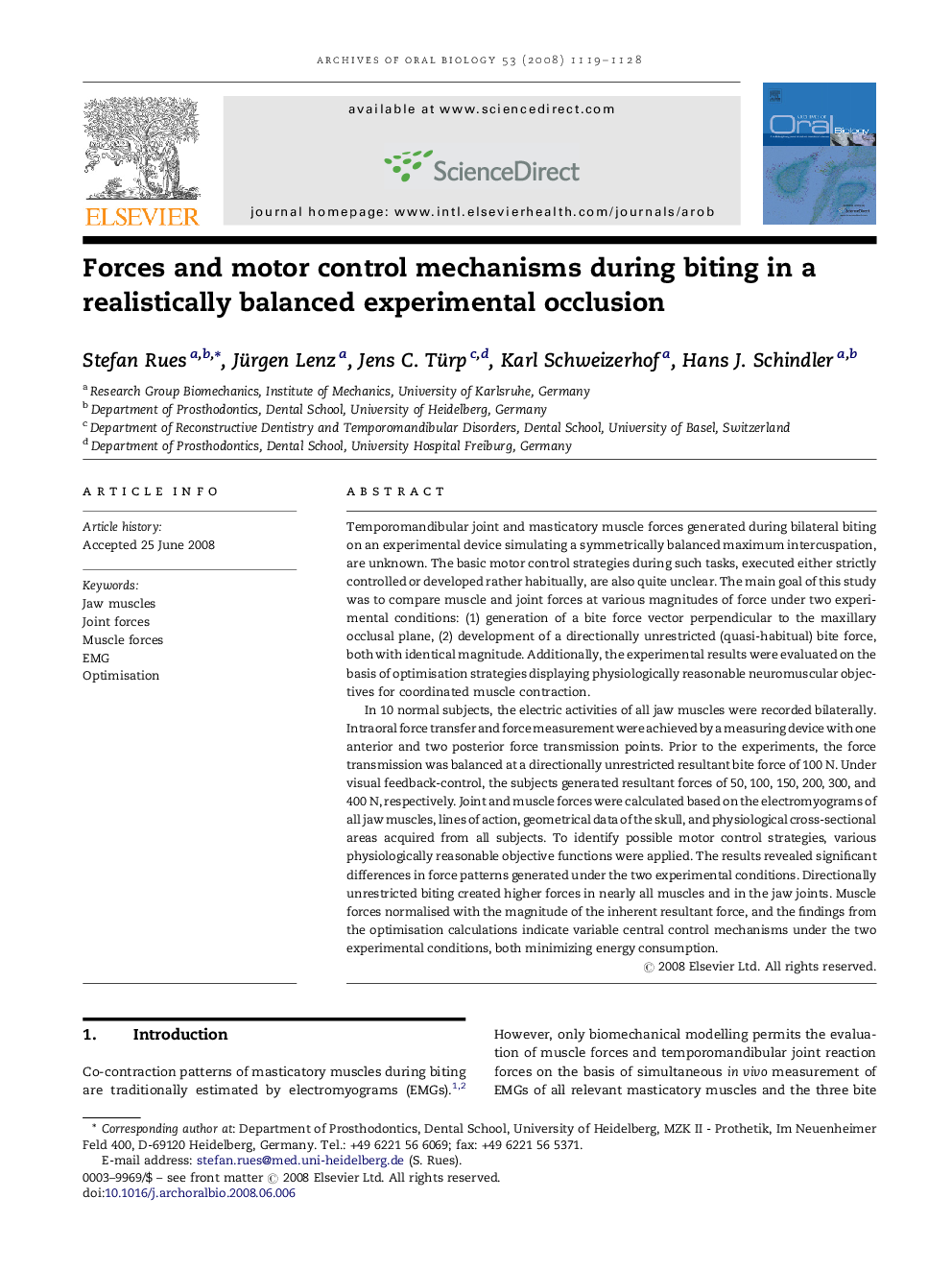| کد مقاله | کد نشریه | سال انتشار | مقاله انگلیسی | نسخه تمام متن |
|---|---|---|---|---|
| 3121348 | 1583378 | 2008 | 10 صفحه PDF | دانلود رایگان |

Temporomandibular joint and masticatory muscle forces generated during bilateral biting on an experimental device simulating a symmetrically balanced maximum intercuspation, are unknown. The basic motor control strategies during such tasks, executed either strictly controlled or developed rather habitually, are also quite unclear. The main goal of this study was to compare muscle and joint forces at various magnitudes of force under two experimental conditions: (1) generation of a bite force vector perpendicular to the maxillary occlusal plane, (2) development of a directionally unrestricted (quasi-habitual) bite force, both with identical magnitude. Additionally, the experimental results were evaluated on the basis of optimisation strategies displaying physiologically reasonable neuromuscular objectives for coordinated muscle contraction.In 10 normal subjects, the electric activities of all jaw muscles were recorded bilaterally. Intraoral force transfer and force measurement were achieved by a measuring device with one anterior and two posterior force transmission points. Prior to the experiments, the force transmission was balanced at a directionally unrestricted resultant bite force of 100 N. Under visual feedback-control, the subjects generated resultant forces of 50, 100, 150, 200, 300, and 400 N, respectively. Joint and muscle forces were calculated based on the electromyograms of all jaw muscles, lines of action, geometrical data of the skull, and physiological cross-sectional areas acquired from all subjects. To identify possible motor control strategies, various physiologically reasonable objective functions were applied. The results revealed significant differences in force patterns generated under the two experimental conditions. Directionally unrestricted biting created higher forces in nearly all muscles and in the jaw joints. Muscle forces normalised with the magnitude of the inherent resultant force, and the findings from the optimisation calculations indicate variable central control mechanisms under the two experimental conditions, both minimizing energy consumption.
Journal: Archives of Oral Biology - Volume 53, Issue 12, December 2008, Pages 1119–1128